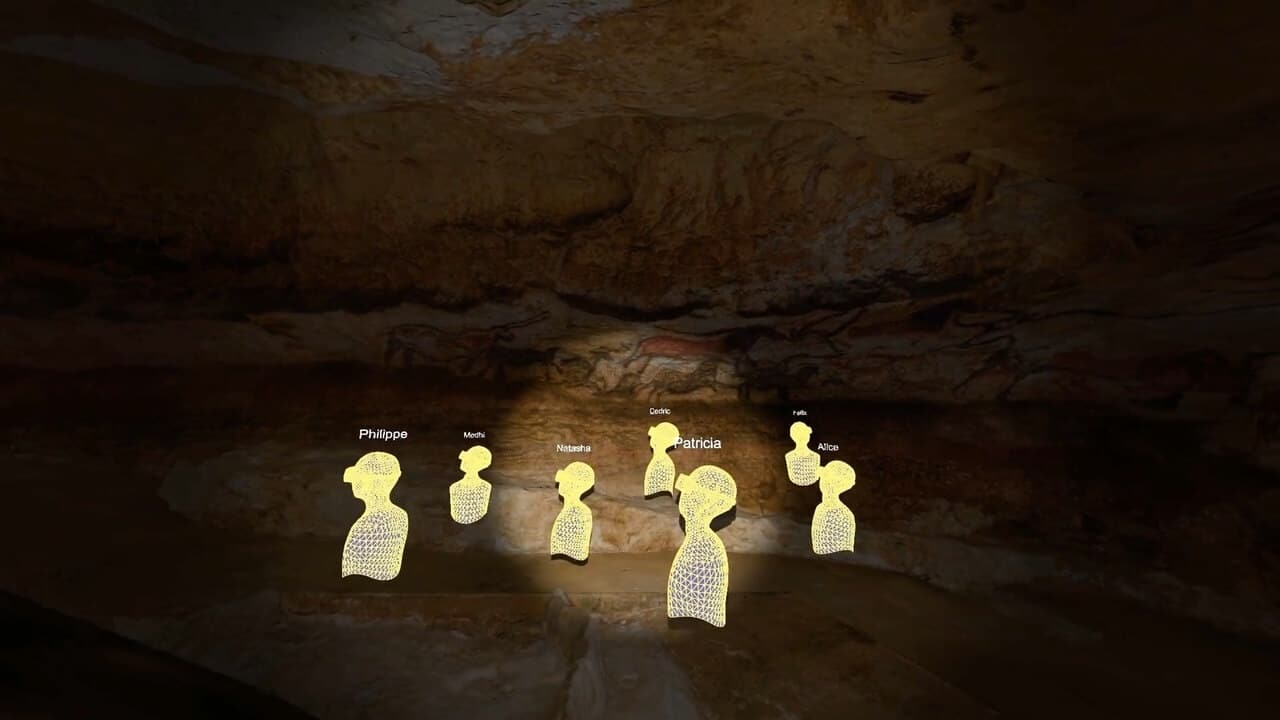
Lascaux Cave was discovered in September 1940 and three months later, it was classified as a historical monument. The cave has earned itself a worldwide reputation thanks to the exceptional quality of its cave paintings and the fragility and complexity involved in its preservation.
The Lascaux Cave, which has been permanently closed to the public since 1963, has been the subject of a number of digitization projects carried out by the DRAC as part of the conservation and restoration tasks of this masterpiece, which was designated as a World Heritage Site by UNESCO in 1979. Since the time spent in the cave is limited (less than - 200 hours a year for the teams working there), and even though it may pose a danger, the creation of the virtual twin opens up new opportunities to access the contents of the cave that are difficult to apply in the real world. Using 1/1 scale multiplayer virtual reality, you can recreate a comprehensive and unique exploration experience and discover new perspectives, in an experience as close as possible to the masterpieces of the Late Paleolithic period painted 20,000 years ago.
The 1/1 virtual twin of the Lascaux cave was designed using new tools researched and developed by Dassault Systèmes together with Exaltemps, the research and innovation laboratory at the Cité de l'architecture & du patrimoine. This new software aims to make it easier to create life-size, multi-participant virtual reality experiences by users without unique technical skills.
"In a world where screens are still two-dimensional, presentation or video editing software is still the most dominant. For Dassault Systèmes, the main challenge was to imagine and develop comprehensive and collaborative tools that would be easier to use. The only skill required is using our hands intuitively, without a controller, just as we do in the real world to stage a life-size narrative that we can physically step into. These new creative tools naturally open up new understandings of cultural sites in the worlds of education, research and beyond, of course," said Mehdi Thayoubi, VP of Innovation at Dassault Systèmes.
By combining raw data from DRAC Nouvelle Aquitaine's digitization projects with these new tools, the three partnerships were able to collaborate virtually in XNUMXD and design a number of comprehensive experience itineraries for visitors.
"We have very accurate data of the cave that we produced in a XNUMXD scan. We are used to seeing these images on our screens, but our ability to immerse ourselves in this virtual twin completely changes this perspective. Today, the time spent in Lascaux is very limited and poses a great risk. For the first time in my life, I can travel there by myself with my whole team, where we can work and test, for example, research hypotheses in real time, even in the most difficult to access areas", said Muriel Mauriac, Curator of the Lascaux Cave.
The visitors immersed in the virtual twin will be able to walk along the terminal at the end of the axis tunnel, even crawling on all fours if they want to - or even go through the cat's cabin that has not yet been shown to the public - just like the conservation team that holds access to the original cave.
“This collaboration with Exaltemps and Dassault Systèmes brings the Cité de l'architecture & du Patrimoine Casting Gallery collection into the 21st century. The transition from plaster to virtual reality is in line with the vision of Eugene Viollet-le-Duc, who initiated the use of life-size casts of our heritage discoveries as a medium for teaching, research, memory and advocacy," added Isabel Marquette, curator of the cast gallery at "" Cité de l'architecture & du Patrimoine
There are also guided tours in augmented reality
For the first time in the world, groups of up to six people - equipped with backpacks and virtual reality headsets accompanied by a tour guide - will be able to explore the entire 235 meters that make up the walls of the prehistoric period in a close way. The users will be able to move freely in the space and communicate with each other through their avatars. The experience is only possible for visitors to the nearby museum.
More of the topic in Hayadan:

One response
Lascau... the title says Lascau